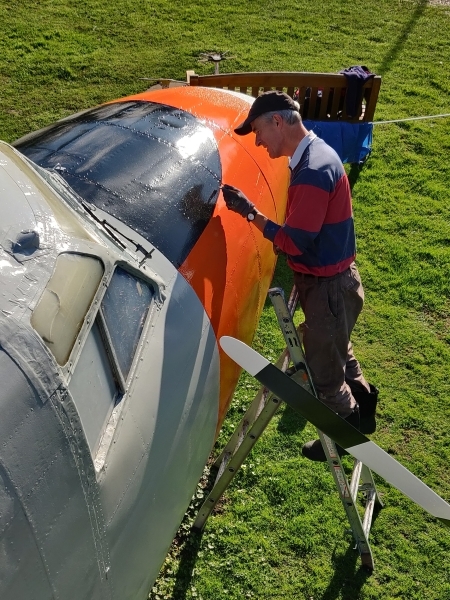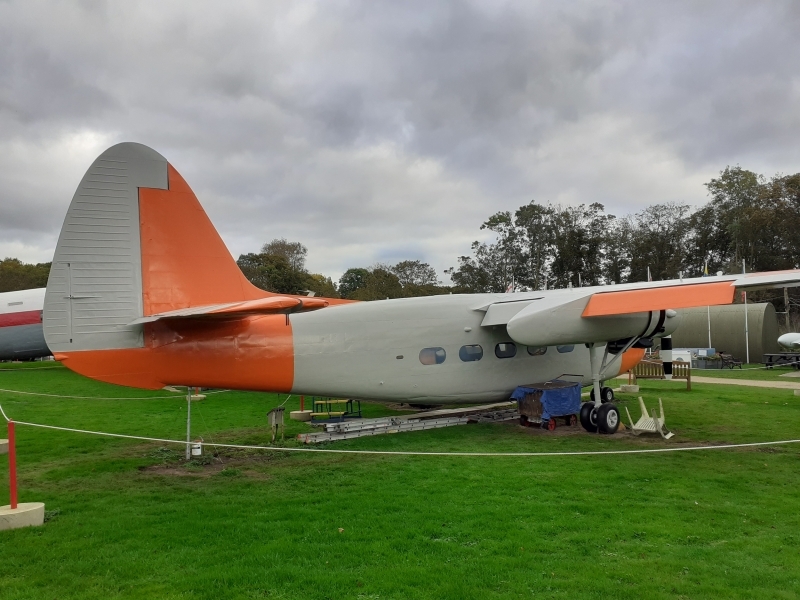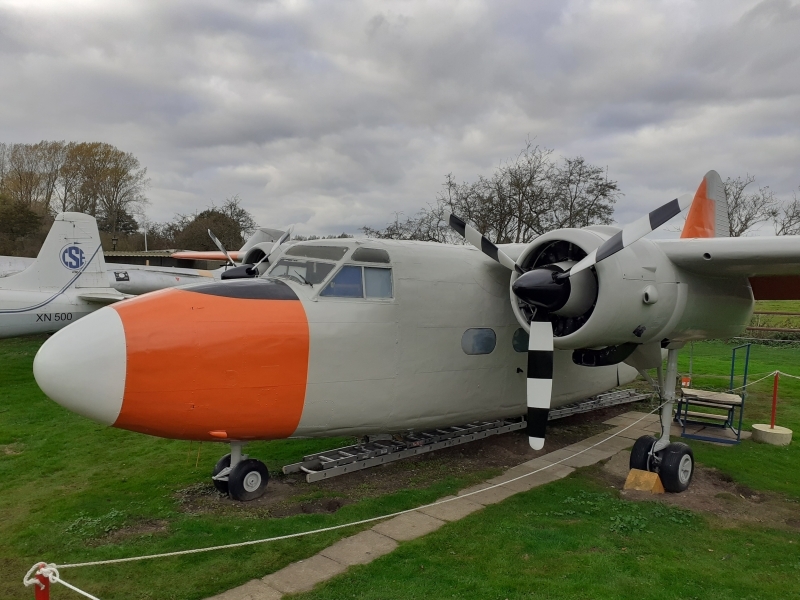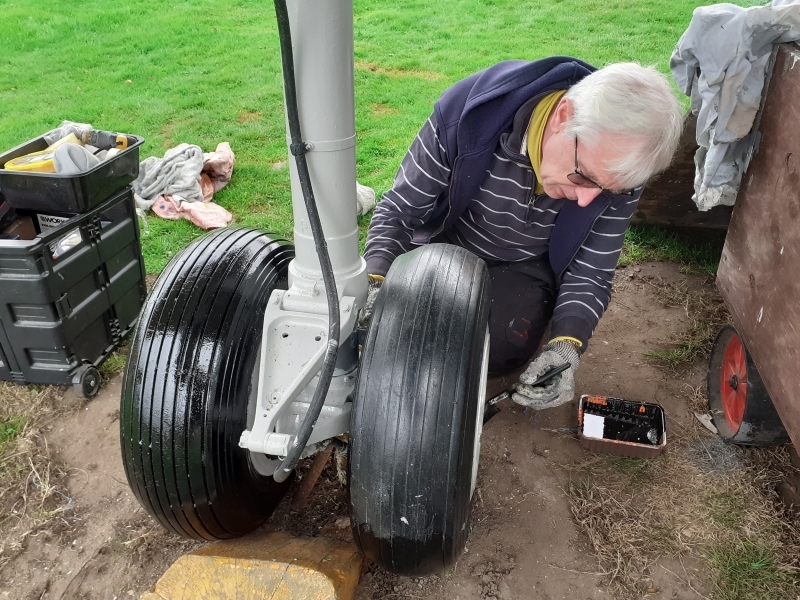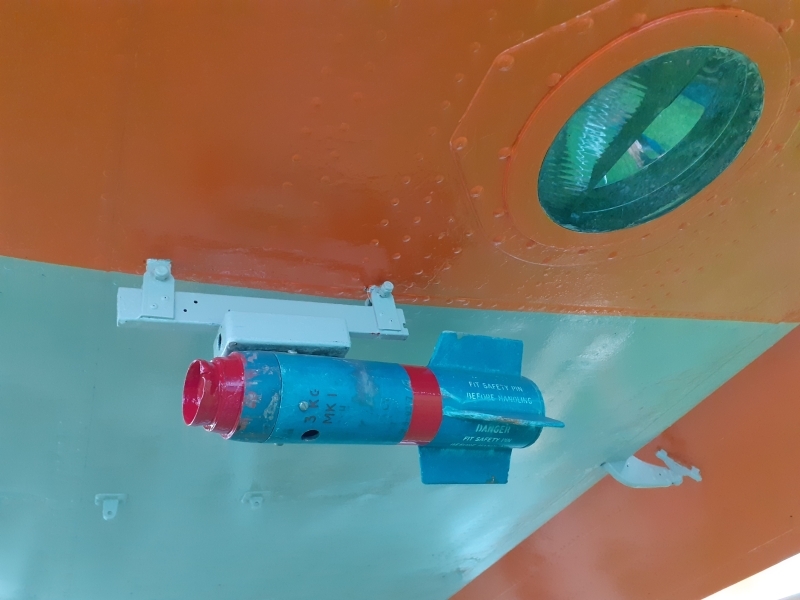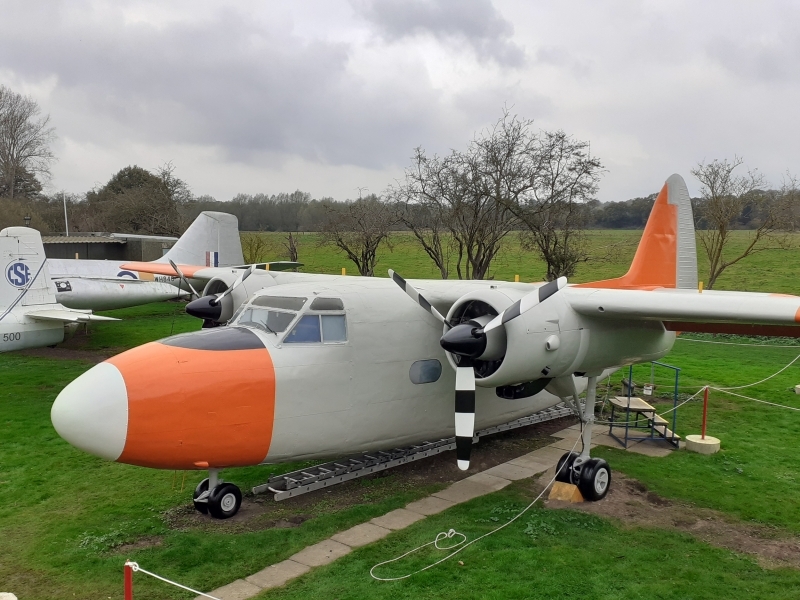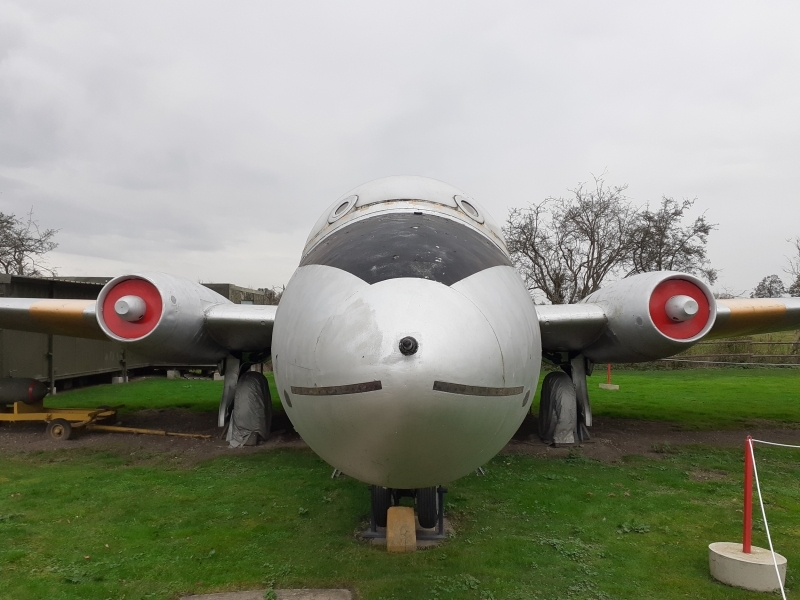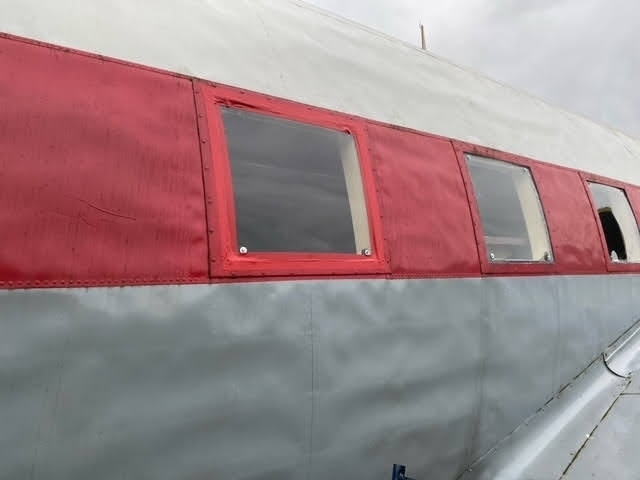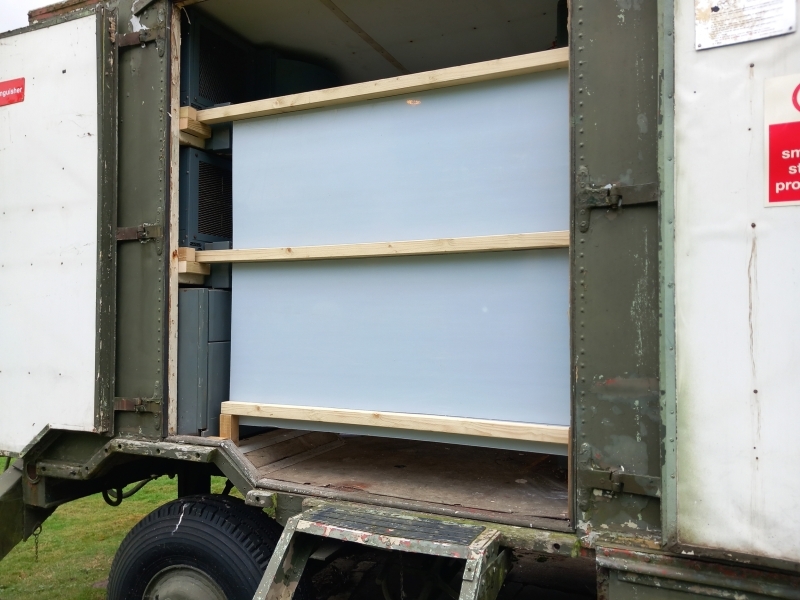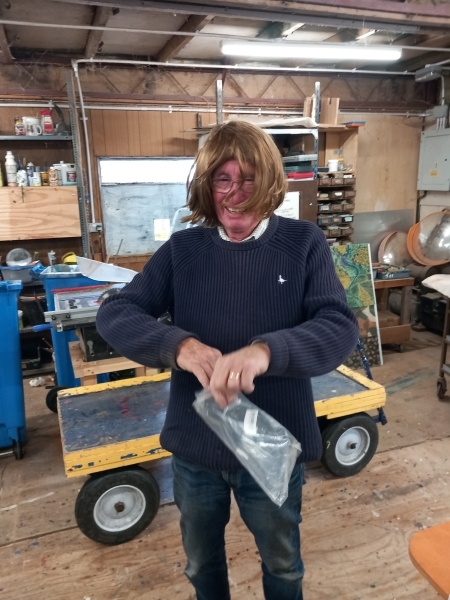NASAM Update as of the 4th Nov 2024
In This Edition
Summary of Contents
In this edition of the blog “Museum News” we have information on the opening dates over the Christmas period as well as the Sunday openings for the rest of November.
From the Teams “Inside and Outside – The Museum“, we have Graham’s input from the Archives, followed by Barry and a double helping of Painters updates. Finally, in this section, we have words from Michael in the Chippies workshop and a new addition to the workforce, “Gladys”.
Pete S
Museum News
General news from the Museum
Christmas Opening
 Yes Folks, we’re open for two days between Christmas and the New Year! If you need an interesting place to run off a little of that post-Christmas energy, walk off some of the excess pud or just get out of the house for a while then bring the family over to Flixton and spend a few hours investigating the intricacies of East Anglia’s Aviation Heritage with us at the Norfolk and Suffolk Aviation Museum!!
Yes Folks, we’re open for two days between Christmas and the New Year! If you need an interesting place to run off a little of that post-Christmas energy, walk off some of the excess pud or just get out of the house for a while then bring the family over to Flixton and spend a few hours investigating the intricacies of East Anglia’s Aviation Heritage with us at the Norfolk and Suffolk Aviation Museum!!
Santa hats and happy, smiley faces will be most welcome on Friday the 27th and Saturday the 28th of December between 10am and 3pm.
The Museum site will be fully open as usual for six hours on each of the days, with aircraft, cockpits and equipment displays, the 446th, Air Sea Rescue and ROC buildings all open and Museum Volunteers on hand to explain the thousands of aviation related items that make up the Museum Collection.
The NAAFI cafe will be open for the serious business of tea (or coffee) and cake, and the shop will be offering a wide range of aviation related goodies to help you make the most of your day.
Entrance to the Museum, and parking when you arrive, are all free for these two days – but we would really appreciate a donation to help with the never ending maintenance of all the exhibits and to help us keep the Museum growing.
Graham
Please note that we have had to take the tough decision to charge for entry to the Museum in 2025 – so this is going to be the last time our doors will be open for free! For details of the charges for 2025, please click on the picture below.
![]()
Opening Days In November
Make a note in your diaries that we are only open on Sundays throughout November, and please note that not all areas will be open to the public due to our winter refurbishment work. We apologise for any inconvenience caused.

Pete S
Inside and Outside – The Museum
Information from the various teams
Flt Lt Charles Greene
An Archive Update
An interesting enquiry flooded in to the NASAM Admin Office during the course of the week last week when a journalist fella called Gary to ask whether the museum still had a particular ribbon of medals that had been awarded to a Lancaster Pilot during the Second World War and, if we did, whether we could tell him what the medals actually were. No reason for the enquiry was given, and no indication as to whether the caller was related to the Pilot. A proper mystery – especially as we had been requested to call him back with whatever information we could find. Urgently. As in the next two days.
Some rapid digging was called for. From the call all we knew was that the Pilot in question was Flt Lt Charles Green. Firing up the trusty spreadsheet we began the search. First thing we found out was the Flt Lt was missing an ‘e’ – he was actually Flt Lt Charles Greene, that five items belonging to him had been donated to the museum by his widow, Barbara, way back in May of 2007 and, thankfully, that we definitely have his medal ribbons somewhere in the museum. A great start for sure, but at that point the Master Spreadsheet started to get a little bit vague.
One of the key bits of information held about every item on the Spreadsheet is its location within the museum. Usually in indecipherable building codes, often hopelessly inaccurate because stuff gets moved around a lot and sometimes it’s just not present at all. The Location field gives us a clue as to where to look first when we need to find a particular something. In this case, we now know that the medals are ‘in the Archives’. Excellent! So far, so good. Which of the four buildings that make up the ‘Archives’ hasn’t been recorded however, which means we can’t put our hands on them immediately. No problem – I can hunt for them next week when I’m back on site – although the journalist wanted a response much sooner than that.
I spoke to him and described the situation within his deadline. It turns out that Flt Lt Greene was a noted yacht and sailboat designer in the post war years and that the journalist, Richard, had been commissioned to write an article about his designs for a well-known yachting magazine, and that it needed to be submitted urgently. Promising to check when next in the museum, I mentioned the other articles that Barbara Greene had entrusted to our care back in 2007, a list that included a set of contact lenses. Richard laughed at that – and told me the following. Charles Greene was short sighted, from his early years he needed glasses or lenses to see clearly. With the outbreak of war he was determined to serve – and serve in the RAF. Knowing his limitation, he memorised the medics sight card so that he could read out any row or combination of letters without hesitation – and without needing his lenses. He convinced the medics at his review, passed the medical exam with flying colours and went on to, well, fly. Not suspecting his short sight, the RAF trained him as a bomber pilot and he flew Lancasters, among other types, on raids over the Reich for the remainder of the war. All he needed to do was to pop in the contact lenses and he was as proficient and skilful as any other pilot on the line. Only perhaps a little more determined.
It’s humbling to hear about heroism and dedication on an everyday scale – and even more so to know that, somewhere in the Archives, we have the very set of contact lenses that enabled his wartime career. A career for which he was decorated. Now I just have to find the medals, and maybe even the lenses…
Graham
![]()
You know when you’ve been Tango’d!
22/10/24 A Paint Team Update
Yes folks, it was a very orange week this over on the Sea Pest. With outside painting days already running into overtime and 3 bods down (Gwen unavailable, Cliff a failed late fitness test, Mark on holibobs), it was left to Ian and Barry to try and get the painting finished on the Sea Prince.
After the inevitable first hour of drying off, Private Walker (Ian) got cracking on the applying the (dayglo alternative) RAL Orange to the rear section of the starboard fuselage below the elevator (see pic 01). On the port side, Barry did likewise, working back towards the tail. By lunchtime, one coat had been applied to both sides of the lower tail section.
After luncheon, Ian moved upstairs and gave the port wing a bit of an orange touch up, before moving on to paint the upper wing antennae in Light Aircraft Grey (see pic 02). Meanwhile, Barry gave both sides of the tail section a second coat of orange and that was pretty much job done for the orange.
Barry spent the last hour of the day applying a coat of Matt Black to the anti-glare area immediately in front of the cockpit (see pic 03). By close of play, painting of all the large surface areas of the Sea Prince was complete (see pic 04/4a). Next week should see some ‘touching in’ of LAG where the masking tape (for the orange) has pulled off some paint, plus one or two areas of outstanding detailing (e.g. engines, the antennae that Tony cut off when repairing the roof).
Tickle my Prince!
29/10/24 A Paint Team Update
With Mr UK Weather serving up another relatively warm and relatively dry day, well into ‘extra time’ (from a painter’s perspective) in late October, the race was on to get the Sea Prince finished. With the bulk areas of painting completed last week, the focus for this week was all the detailing.
After the usual ‘wiping down’ of a dewy aircraft, Mark went up top to paint the wing antennae yellow (see pic 05). Meanwhile, up front Barry gave the anti- glare another coat of matt black.
In between multiple coats of Buttercup yellow, Mark broke out the Tyre black and gave all the wheels a fresh coat (see pic 06). Having finished on the nose, Barry then went in search of areas of Light Aircraft grey that needed touching up following the removal of orange/grey masking tape lines last week. After that, he detailed the constant speed regulators behind the spinners using a combination of red and black (see pic 07). The exhaust port tips also got a coat of matt black and the undercarriage (‘remove before flight’) stays were given a tickle in Post Office red. The final bit of detailing was to refresh the stripes on the port wing bomblet (see pic 08). And that was that. The Sea Prince is now finished (see pic 09), save for the decals that we hope to fit over the next few weeks, using, in part, our new vinyl cutter.
In other news, the Skipper (Cliff) was put onto light duties having failed another late fitness test. Private Walker (Ian) was on holibobs, safe in the knowledge that the Sea Prince was almost done. Gwen, the ‘queen of green’ became the ‘queen of spring clean’ this week, spending the morning cleaning various exhibits in the Main Hangar. In the arvo, she just had time to give the Canberra engine covers and quick refresh in red (see pic 10) before calling it a day.
During the day, Mark and Barry were intrigued by the goings on over on the starboard side of the Valetta. Our friends the Restoration Team were seen deploying their latest technological gizmo, Self-Installing Aircraft Windows, pun very much intended (see pic 11)! Despite allegedly being self-installing, it seemed to Mark and Barry that quite a lot of manual intervention was required (see pic 12), with James sent up a ladder and Roger (Lord of the Flies!) dispatched to the cabin. By close of play, it was pretty much two windows down and four to go on the starboard side (see pic 13), the port side already being complete.
Barry
(Photos) Paint Team Update
![]()
Gladys and the Bloodhound
A Chippies Update
One late summer afternoon, Ivor wandered into the Chippies Workshop and asked the leading question: “Have you got any perspex?” “Well”, replied a Chippie, “How big and what for?”. “Well, I was thinking about opening up the door of the Bloodhound Radar Cabin and want a piece of perspex to make a screen in the gap. Oh, and can you think of a way to hold it up?”
Intrigued, Ash and Michael F promptly set aside the mundane task they were doing (building yet another display cabinet) and accompanied Ivor to the scene of the crime.
Inspection of the big green caravan revealed a doorway with not one but two doors. The view from the first into the interior was OK if you climbed the steps, but it was dark inside. “Why not open both? And that would make mounting the perspex easier.”. “Let’s do it!”cried Ivor. With two open doors, the view became more interesting, even from the ground.
“Have you got some perspex big enough to fill that gap?” asked our hero.
Out came the primary tool of a Chippie, a trusty tape measure, measurements were dilligently taken, and duly scribbled in the all-important notebook. “Yes, we have an unused (never spare!) sheet of perspex stored away for a project such as this that should do the trick. Now, how shall we mount it?” Much humming and ha’ing ensued, and all three heroes climbed in and out, up and down, and examined the door frames and sundry equipment fittings from all points of view to seek possible answers.
“I know!” quoth one Chippie, “let’s think about this over tea!”. And having resecured the Cabin, everyone retired to the Chippies Workshop for tea and cogitation (and even biscuits).
So ended the start of the story.
As summer wore on towards Autumn, a basic plan formed: three bars across the doorway would support the perspex and keep it rigid. The equipment shelves on the left-hand side would support two bars while the wheel arch would hold up the lower one. Blocks at the same heights attached to the doorframe would provide support on the right.
“How would we get inside for cleaning or re-arranging or whatever?” queried Ivor, who could see himself having to climb over a 4-foot perspex wall. “Oh,” said a Chippie “we build it backwards: supports outside, perspex inside. Then, with the right tools, you can take it off when you need to.”
In early September, the Chippies started preparing the materials to take to the Cabin on the next nice sunny day. As they cut 5 feet off an 8-foot sheet of perspex, in walked Steve B. “Has anyone cut me that perspex I asked Dave H for?”
“How much was it?,” asked the ever helpful Chippies, pretending not to have forgotten the request.
“Oh, 36 inches by 48 inches,”
“Here you are, we’re just cutting it for you now, or rather, you can have this offcut.” Another satisfied customer.
Then came a day (after late holidays for all) when Ivor and the Chippies (that well-known rock band) sallied forth to commence fitting the new viewing barrier. The doors of the cabin swung wide to reveal a figure sitting in the controller’s seat. “Who’s that?” asked the amazed Chippies “and why hasn’t she got any hair?”
“That’s Gladys, and I haven’t found a wig for her yet.” came the reply. “Oh, that’s brilliant! That’s what is needed to make this work. We have a wig donated by a volunteer, that will do the job”.
“Good idea!” said Ivor. “Another thing, I think there could be a bit more light in here. Can you think how we could do it as I don’t think the Leckies, nice as they are, would be too happy running cables here”.
“How about a solar light? You could leave it on all the time then or have a movement sensor.” “I don’t think Gladys moves around much,” quipped Ivor.
“Ha Ha”, laughed (!) the Chippies, “Now, how were we going to put this all go together? “
Unfortunately, our first go didn’t work. We hadn’t taken into account the locking mechanism, so the doors wouldn’t close with the bars in place. Answer: packing blocks between the bars and the door frame. Perfect!
Late September, and one slightly damp Thursday (damp not pouring, for a change) in went the packing and supports on went the crossbars, then the perspex. A cheap but perfectly functional indoor/outdoor solar lamp hung from the ceiling with the cable passing through an air vent to the solar panel on the roof.
“Ta-da!” cried Ivor as he placed the full head of red hair on her head: “Gladys is ready!”
And so, ladies and gentlemen, on Sunday 20th October, the public for the first, and definitely not the last time, saw Gladys preparing to control the Bloodhound outside to its destination.
Gladys may be visible, controlling her Bloodhound missile, until the end of November when Winter comes, and it gets too cold for her to leave the doors of her cabin open. Come next year, when the birds start chirping, so will Gladys….
Michael F
(Photos) Chippies Update
The Repeat Info
Here we are near the end of 2024 and the repeat information is still here I’m afraid, and I make no apologies for keeping his section in our blog. We are a charitable organisation relying on monies from the public to keep us going. Any help we receive is gratefully accepted and enables the museum to continue in our mission “To conserve, preserve and promote the history of aviation in East Anglia, whilst providing a fun, family-friendly and interactive museum, promoting education and remembrance of the events of the past“.
Are you thinking of helping ??
 We save money by having a dedicated group of volunteers that keep the museum and the exhibits both manned and maintained. We hope therefore a few people may consider helping in the ways below.
We save money by having a dedicated group of volunteers that keep the museum and the exhibits both manned and maintained. We hope therefore a few people may consider helping in the ways below.
There are three easy ways to help: Help by becoming a Museum Member, also by Volunteering to help at the museum, or by Donating to assist in our running and maintenance costs. Please click on the appropriate button below to access the appropriate information:
Keep Up To Date
![]() To keep up to date with further information, please keep an eye on our Social Media (see the Social Media buttons at the foot of this blog) or click on the button below to be notified by email of any upcoming changes by seeing the latest blog.
To keep up to date with further information, please keep an eye on our Social Media (see the Social Media buttons at the foot of this blog) or click on the button below to be notified by email of any upcoming changes by seeing the latest blog.





